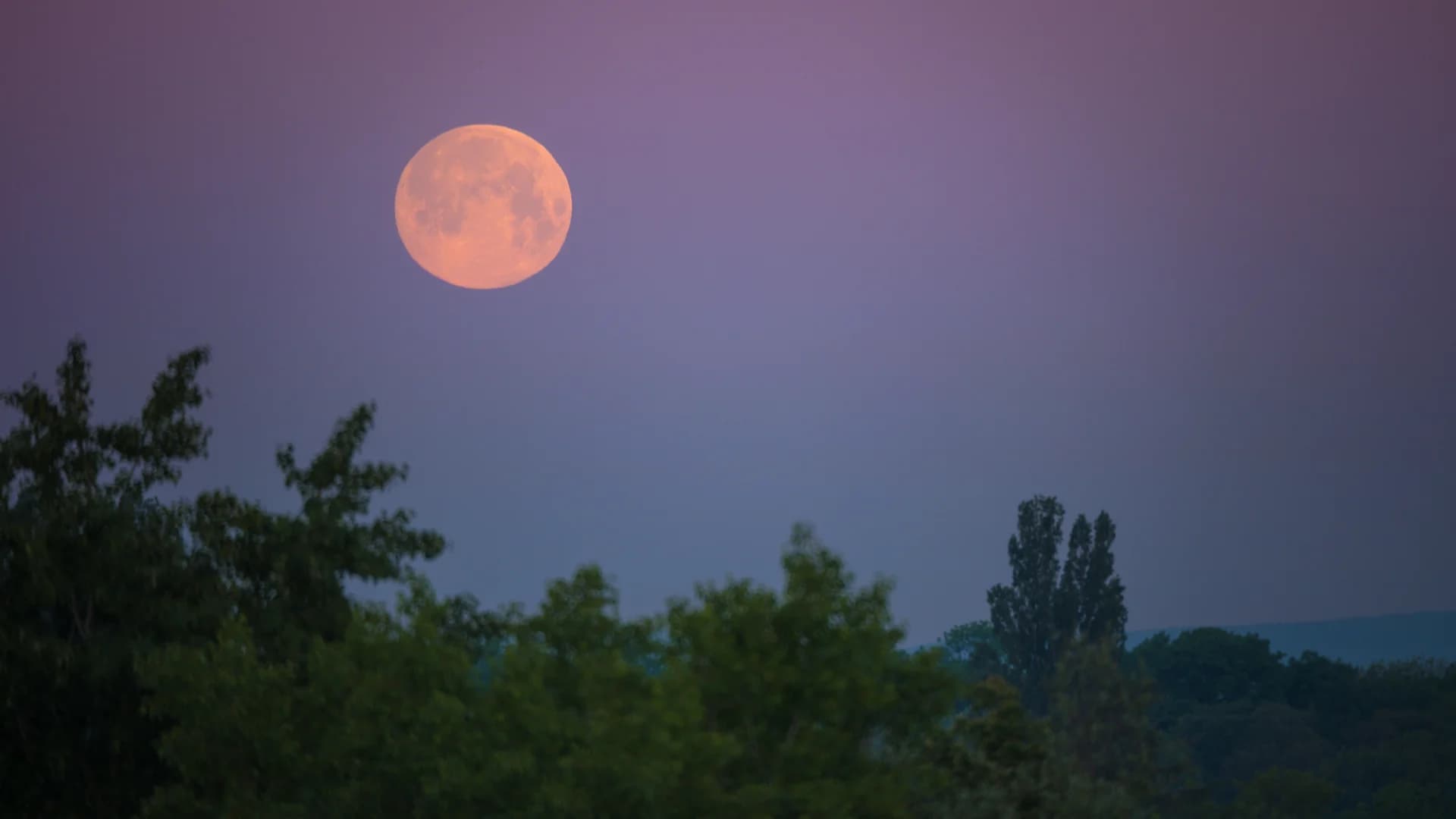More Stories

Another supermoon will be brightening our skies tonight!
The super flower moon will rise at 7:33 p.m. and set Wednesday morning at 5:33 a.m.
The name was generated by Native American tribes because of the time of year when spring flowers appear in abundance. This moon has also been known as the Corn Planting Moon and the Milk Moon.
A moon is considered "super" when it appears bigger and brighter due to its closer proximity to Earth.
Typically, this will make the moon appear roughly 7% bigger and about 15% brighter than a normal moon, but it could look as much as 14% bigger and 30% brighter! For some, however, this subtle difference will be hard to tell with the naked eye.
As an added bonus, the full moon is coinciding with a lunar eclipse as the moon moves into the Earth's shadow. Lunar eclipses occur when the moon is on the opposite side of the Earth as the sun. Usually we just see a full moon when this happens, but every so often the moon enters the Earth's shadow.
However, the tri-state region will only get a brief glimpse of this as the moon will be setting below the horizon. Therefore, you will need to be in an unobstructed area looking west shortly before sunrise (5:30 a.m.) in order to catch the beginning of the eclipse.
The Western United States, Pacific Ocean, Australia and Eastern Asia will be treated to a full lunar eclipse. During a full lunar eclipse, the moon can appear a rusty-red or brown color, which is why it is often referred to as a "blood moon." This occurs because of sunlight that's filtered through and refracted by Earth's atmosphere.
The next lunar eclipse for us will be later this year on Nov. 21. Although it will only be a partial eclipse, we will get to see it from start to finish this time. The next total lunar eclipse for us will be just under a year from now on May 16, 2022.
More from News 12
1:27

Thunderbolt 12 tracks severe thunderstorms and floods in Fairfield County
2:09

Sunrise solar eclipse is Thursday – everything you need to know!
1:50

Turning waste into watts a boon for environment

NOAA's 2021 hurricane season forecast sees another busy season in the tropics
1:01

It's National Safe Boating Week - here's what you need to know
